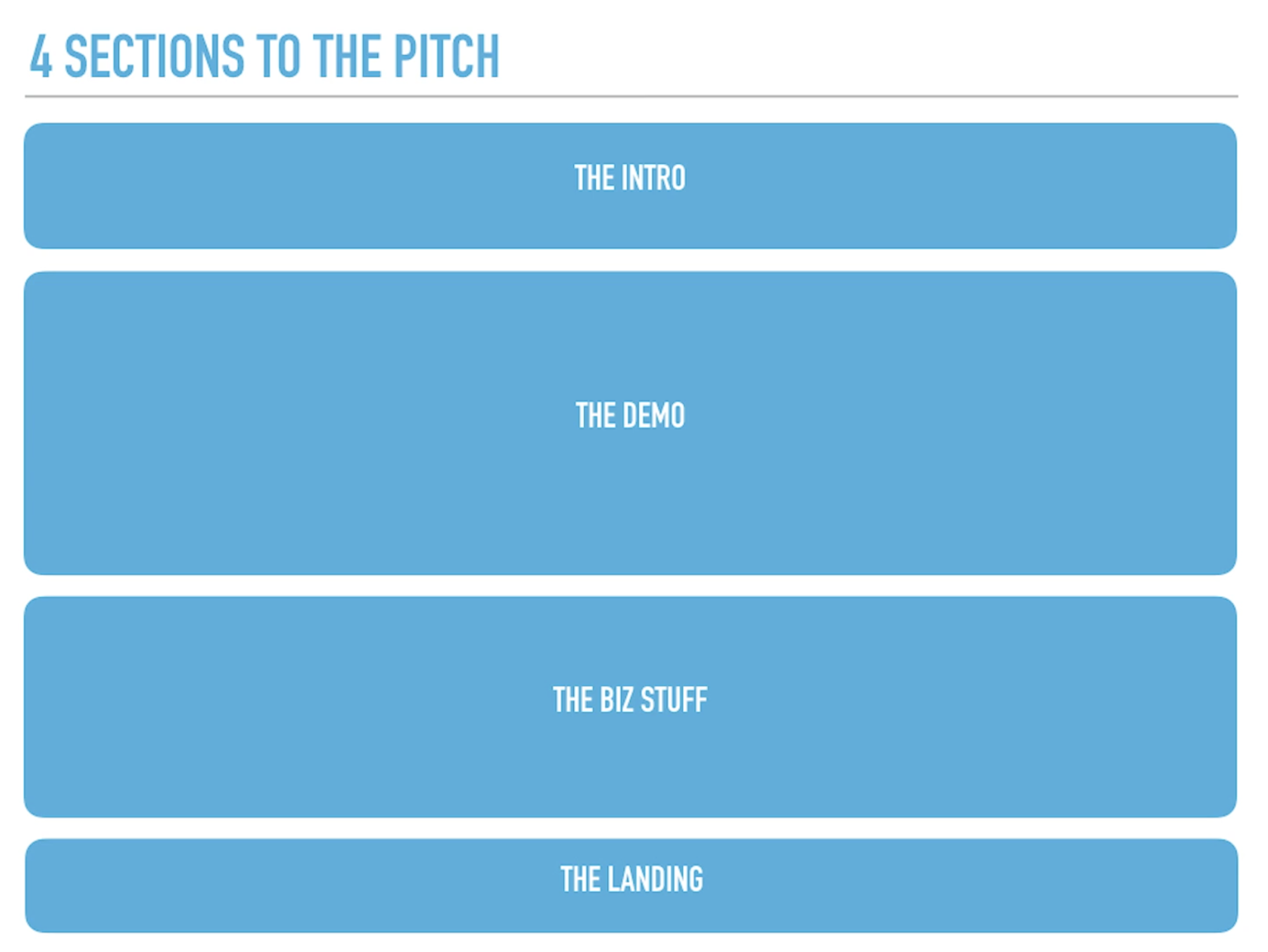What you’ll learn:
How to optimize the last few minutes of your pitch and leave a lasting impression with investors
So many times entrepreneurs finish their pitch and rush off stage without taking the opportunity to create that lasting impression with investors. It’s here that you need to “Stick the Landing.”
Before you go on stage you have to mentally prepare yourself going into that pitch, that you are going to own it, and you are going to show complete confidence to the very end. Reason being if you feel awkward doing a pitch in front of investors and customers, and it shows on stage, it’ll be difficult for investors to believe you’re confident enough to do the hard things.
During this section, as you’re wrapping up your pitch, restate your top features and benefits and make a call-to-action.
Remember, the day you decided to become an entrepreneur is the day you decided to become sales people, so ask for something. You always need help with something, so ask. If anything just say, “If you’re interested in learning more about my company, come find me afterwards, I would love to answer your questions.”
Final Thoughts about Pitching
Delivery of your Pitch
“I’d rather watch D-level content with an A-level delivery than A-level content and a D-level delivery,” Nicole said.
As you’re practicing the delivery, it’s important to learn how to adjust your tone, speed of talking and gestures when delivering your pitch.
As an exercise, change up the different speeds during your pitch because certain parts of the content you may want to speed up the content delivery and show excitement, and other parts you may want to slow down for emphasis, or add in pauses and embrace the silence.
Power of Silence
Silence on stage can be a powerful tool if used correctly. A pause during your pitch can be very powerful if you want to make a point.
Also, when you are on stage and silent for a moment, the people who are paying attention are taking in your information and the people who are on their phones look up and wonder what is going on, and may re-engage with you.
People Will Listen or Read, They Won’t Do Both
You have a choice, either the audience will read or they’ll listen, but they won’t do both.
Most importantly, stop using bullet points because it causes people to start reading and stop paying attention to you.
It’s way more powerful when there is very little on the slide and your audience is listening to you.
This strategy also applies to complex charts and graphs. Complex charts and graphs are ok for one-on-one conversations because you can walk them through the chart. But when you’re up on stage and trying to keep the attention of investors and fighting against their cell phone, you have to keep it simple.
Watch an example of charts/graphs
No Generic Information
Using generic language to describe your business is deadly. Entrepreneurs like to fall into the trap of telling people who they are - instead of tell people how you do what you do, and that will keep you out of generic language.
Example of a descriptor: Our sales and intelligent tool helps people close deals faster
This startup doesn’t explain what the company actually does. It leaves me thinking about what do they do and what’s the product? It’s just too generic.
Another example: We help companies collaborate on social media content.
Again, what does the company do? This descriptor sounds like a thousand other social media startups.
Practice Like Your Company Is on the Line
The more you practice your pitch as though your company is on the line, then the more you will train your brain on the type of message and delivery you want investors to hear.
When you stand up on stage at pitch practice and deliver it at a mediocre level, then you’ll only rise to that level. Instead, practice being awesome, practice like your company is at stake - because when your company is on the line, you’ll be ready.
Practice Your Answers
As you’ve been pitching your company out, you might have a list of common questions. Take the top 5 questions, develop answers and practice those answers so you know them solid.
Make sure your cofounders or team members are writing down all the questions received, then take the top 5 questions, develop answers and practice those answers so you, and your team, know it solid.
The consequences of not doing this exercise is it will communicate to investors that you really haven’t thought about your business
Now if you really don’t know the answer to a question, most importantly, don’t lie and don’t B.S. someone, ever. Instead, be honest and offer to follow-up with an answer. Plus it gives you a reason to reconnect with the person.
Example of a response: “That’s a great question, and I’m embarrassed I don’t know the answer, but can I get your contact information and follow-up with you?”
Then do the research and follow-up immediately.
Fine tune your pitch deck through the self-guided exercises HERE.


